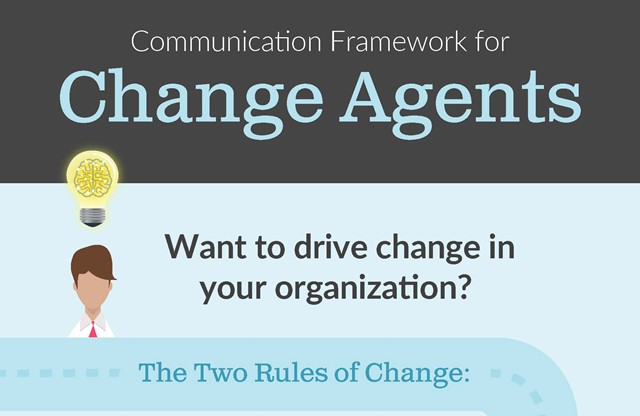Who is the real decision maker? Find out or lose the sale.
The prospect tells you, “I only need one more approval and the order is yours.”
For joy, for joy – the order is mine! – Eh, eh, eh – don’t celebrate too soon. The one last person needed to approve, is the real decision maker. The boss. The guy you were supposed to be talking to in the first place. The one person who can say “no,” and there’s no possibility of reversing it. Rut-row.
Throw some water on yourself, pal. This sale hangs by a thread – and what are you doing about it? Going home and bragging “it’s in the bag,” or saying over and over – “I hope I get it, I hope I get it?” Neither will work.
Here’s what to do: The words “I only need one more approval and the order is yours” must trigger your response to the prospect – “Great, when do we all meet?”
Get the prospect to agree to let you attend the final decision meeting.
If you’re not present when the last decision is made – odds are you will lose the final battle of the sales war without being able to fire one bullet.
Try this: (In a non-salesy, friendly way), say to the prospect, “I’m an expert at what I do, and, Mr. Jones, you’re an expert at what you do. Surely as you discuss our service, questions about productivity and profitability will arise. I’m sure you agree that the right information needs to be presented so that the most intelligent decision can be made, true? (get commitment)
And questions might arise about our service. I’d like to be there to answer questions about my expertise so you can make a decision that’s in the best interest of your business.” (If this fails, try adding on the phrase – “Pleeeeaaase, I’ll be your best friend.”)
If the prospect (customer) agrees to the meeting, he or she considers you a resource, a partner. They trust you. If they don’t agree to let you in the meeting – they just consider you a salesperson.
When others need to ‘final approve’ the deal, besides learning to know the buying process better, you must take these five action steps or the sale is in jeopardy…
1. Get the prospect’s personal approval. “Mr. Prospect, if it was just you, and you didn’t need to confer with anyone else, would you buy?” (The prospect will almost always say yes). Then ask, “Does this mean you’ll recommend our service to the others?” Get the prospect to endorse you and your service to the others, but don’t let him (or anyone) make your pitch for you.
2. Get on the prospect’s team. Begin to talk in terms of ‘we,’ ‘us,’ and ‘the team.’ By getting on the prospect’s team, you can get the prospect on your side of the sale.
3. Arrange a meeting with all decider’s. Do it any (ethical) way you have to.
4. Know the prime decider in advance. “Tell me a little bit about the others.” (Write down every characteristic). Try to get the personality traits of the other deciders.
5. Make your entire presentation again. You only have to do this if you want to make the sale. Otherwise just leave it to the prospect. He thinks he can handle it on his own, and will try his best to convince you of that.
If you think you can get around these five steps, think again. (It’s obvious you’re looking for shortcuts or you would have known the buying process in the first place.)
If you make the mistake of letting your prospect become a salesperson on your behalf (goes to the boss or group instead of you), you will lose. Most every time.
Here’s 2.5 ounces of prevention (for next time):
1. Qualify the decision maker as the ‘only’ by asking a seemingly innocent question at the beginning of your presentation – “Is there anyone else you work with (confer with, bounce things off of) on decisions (situations) like this?” The object is to find out if anyone else is involved in the decision BEFORE you make your presentation.
2. Prevent the situation from occurring by saying in your initial presentation: “If you’re interested in our ——-, when we’re finished, would it be possible to meet the CEO and chat about it?”
2.5 The most powerful qualifying question you can ask is (AND IT MUST BE ASKED EXACTLY THIS WAY): “Bill, how will this decision be made?” Bill will give you an answer. AND YOU FOLLOW UP WITH THE QUESTION: “Then what?” And Bill will begin to give you the saga about how the decision is really made. You ask “then what?” four or five times and PRESTO!, you’ll have the name of the real decision maker.
The number of sales you make will be in direct proportion to the number of actual decision-makers you sit in front of. The problem with most salespeople (not you of course) is that they are sitting in front of someone who has to ask their mommy or daddy if they can buy it or not.
Real salespeople sit in front of real decision-makers. How real are you?
About the Author


 ceIf you’re looking to conduct cross-continent business, know that you can, but the task is not easy. Managing one location has it’s own challenges like keeping up with all of your departments including Human Resources, sales, marketing and the like. Now, think about doing that, but all over the world where there are different time zones, cultures and expectations. Those of you that already run a multi-location enterprise know how difficult this can be. Again, it might not be simple, but with the right frame of mind and the best practices in place, you’ll be able to grow and strengthen your cross-continental presence and allow your business to truly thrive. The following are some tips that will enable you to conduct your global business successfully.
ceIf you’re looking to conduct cross-continent business, know that you can, but the task is not easy. Managing one location has it’s own challenges like keeping up with all of your departments including Human Resources, sales, marketing and the like. Now, think about doing that, but all over the world where there are different time zones, cultures and expectations. Those of you that already run a multi-location enterprise know how difficult this can be. Again, it might not be simple, but with the right frame of mind and the best practices in place, you’ll be able to grow and strengthen your cross-continental presence and allow your business to truly thrive. The following are some tips that will enable you to conduct your global business successfully. Benoît Gruber joined Sage in 2008 and is the Vice President of Corporate Communication for Sage Enterprise Market and Sage X3. He is responsible for Product Management & Marketing for Sage X3 globally, and is in charge of ensuring that the Operating Company (OpCo) teams are aligned behind the product strategy. He also serves as the Sage X3 solution expert in relationships with thought leaders, analysts and press. Prior to working at Sage, Benoît worked at SAP (from 2000-2008), where he held a variety of marketing and product management positions before becoming Sr. Industry Principle (Product & Business Development). He was a member of the EMEA Manufacturing Industries Business Group. Prior to working at SAP, Benoît worked for management consulting and technology services companies dedicated to ERP, Business Intelligence and new technologies. Benoît has also owned a company in the Media and Publishing sectors.
Benoît Gruber joined Sage in 2008 and is the Vice President of Corporate Communication for Sage Enterprise Market and Sage X3. He is responsible for Product Management & Marketing for Sage X3 globally, and is in charge of ensuring that the Operating Company (OpCo) teams are aligned behind the product strategy. He also serves as the Sage X3 solution expert in relationships with thought leaders, analysts and press. Prior to working at Sage, Benoît worked at SAP (from 2000-2008), where he held a variety of marketing and product management positions before becoming Sr. Industry Principle (Product & Business Development). He was a member of the EMEA Manufacturing Industries Business Group. Prior to working at SAP, Benoît worked for management consulting and technology services companies dedicated to ERP, Business Intelligence and new technologies. Benoît has also owned a company in the Media and Publishing sectors. Power Stars to Light the Business Flame, by Hank Moore, encompasses a full-scope business perspective, invaluable for the corporate and small business markets. It is a compendium book, containing quotes and extrapolations into business culture, arranged in 76 business categories.
Power Stars to Light the Business Flame, by Hank Moore, encompasses a full-scope business perspective, invaluable for the corporate and small business markets. It is a compendium book, containing quotes and extrapolations into business culture, arranged in 76 business categories.
 Sharon Drew Morgen is founder of Morgen Facilitations, Inc. (
Sharon Drew Morgen is founder of Morgen Facilitations, Inc. (